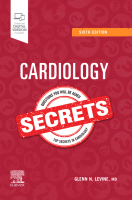Physical Address
304 North Cardinal St.
Dorchester Center, MA 02124

1 What are the causes of mitral regurgitation? There are two broad categories of mitral regurgitation (MR), primary and secondary. In primary MR, disease of the mitral valve causes it to leak, imparting a volume overload on the left ventricle…

1 What is aortic regurgitation? Aortic regurgitation (AR) occurs when an incompetent aortic valve (AV) allows blood initially ejected from the left ventricle (LV) to the aorta to return to the LV during diastole. 2 What are the causes of…

1 What is the prevalence of aortic stenosis? What are the trends in aortic stenosis with age? Aortic stenosis (AS) ( Fig. 29.1 ) is the second most common valvular heart disease in the community, and the most frequent single-valve…

1 How many heart transplants are performed in the United States each year? Dr. Christiaan Barnard performed the first human allograft transplant in 1967. Approximately 3000 heart transplants now occur each year, most commonly for nonischemic cardiomyopathy (51%) and coronary…

This chapter addresses the long-term management of patients with chronic heart failure with reduced (depressed) ejection fraction (HFrEF). The management of patients with heart failure with preserved ejection fraction (HFpEF) is discussed in Chapter 23 . The management of patients…

1 What is acute decompensated heart failure? Isn’t it just a worsening of chronic heart failure? Acute decompensated heart failure (ADHF) is a clinical syndrome of worsening signs or symptoms of heart failure (HF) requiring hospitalization or other unscheduled medical…

1 What is the basic pathophysiology in restrictive cardiomyopathy? The basic pathophysiology in restrictive cardiomyopathy is increased stiffness of the ventricular walls as a result of myocardial disease, leading to impaired diastolic filling of the ventricles. The result is a…

1 What is hypertrophic cardiomyopathy? Hypertrophic cardiomyopathy (HCM) is a primary cardiac disorder characterized by myocardial hypertrophy and a nondilated left ventricle (LV) in the absence of both an accountable increase in cardiac afterload (i.e., aortic stenosis or systemic hypertension)…

1 Describe diastolic dysfunction. Diastolic dysfunction (DD) is defined as increased viscoelastic chamber stiffness, impaired ventricular relaxation, or a combination of both. Decline in left ventricular (LV) compliance occurs with aging and may be accelerated by conditions such as hypertension,…

1 What is the definition and incidence of heart failure? Heart failure (HF) is a clinical syndrome resulting from progressive myocardial dysfunction that compromises ventricular filling and cardiac output. HF patients may be broadly categorized as having HF with preserved…